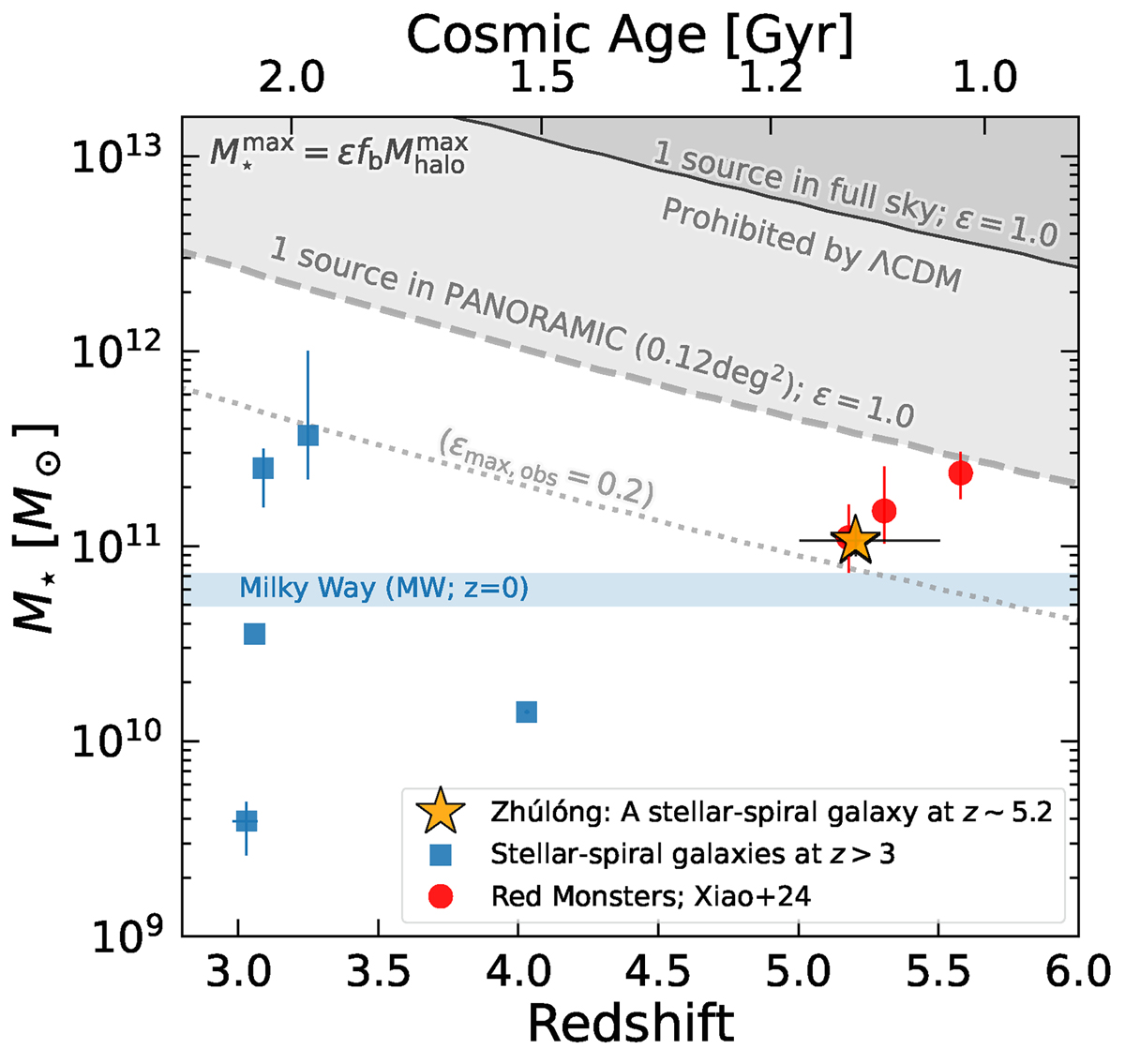Fig. 4.

Download original image
Stellar mass of Zhúlóng (orange star) compared to other representative galaxies and the model expectations. The red-filled circles show three spectroscopically confirmed ultra-massive galaxies (so-called red monsters; Xiao et al. 2024). The blue squares show z > 3 galaxies reported to have clear stellar spiral structures (Jain & Wadadekar 2024; Wang et al. 2024b; Umehata et al. 2024; Costantin et al. 2023; Wu et al. 2023). Note that there is no error bar of M⋆ given in Wu et al. (2023). The dashed and dotted gray lines indicate the maximum stellar mass calculated from the maximum halo mass (![]() ) given the PANORAMIC survey volume, based on
) given the PANORAMIC survey volume, based on ![]() , the cosmic baryon fraction fb = Ωb/Ωm = 0.158, and assuming a baryon-to-star conversion efficiency of ϵ = 1 and 0.2. As a reference, we also show ϵ = 1 with the full sky coverage as the black line. The gray regions indicate the stellar mass prohibited by the standard Λ cold dark matter cosmology.
, the cosmic baryon fraction fb = Ωb/Ωm = 0.158, and assuming a baryon-to-star conversion efficiency of ϵ = 1 and 0.2. As a reference, we also show ϵ = 1 with the full sky coverage as the black line. The gray regions indicate the stellar mass prohibited by the standard Λ cold dark matter cosmology.
Current usage metrics show cumulative count of Article Views (full-text article views including HTML views, PDF and ePub downloads, according to the available data) and Abstracts Views on Vision4Press platform.
Data correspond to usage on the plateform after 2015. The current usage metrics is available 48-96 hours after online publication and is updated daily on week days.
Initial download of the metrics may take a while.


